The desert tortoise is a fascinating species of tortoise that lives in northwest Mexico and the southwestern regions of the United States. They live largely in the Mojave and Sonoran deserts where they are uniquely adapted to cope with the harsh, unforgiving landscape. Join us as we learn 10 incredible desert tortoise facts!
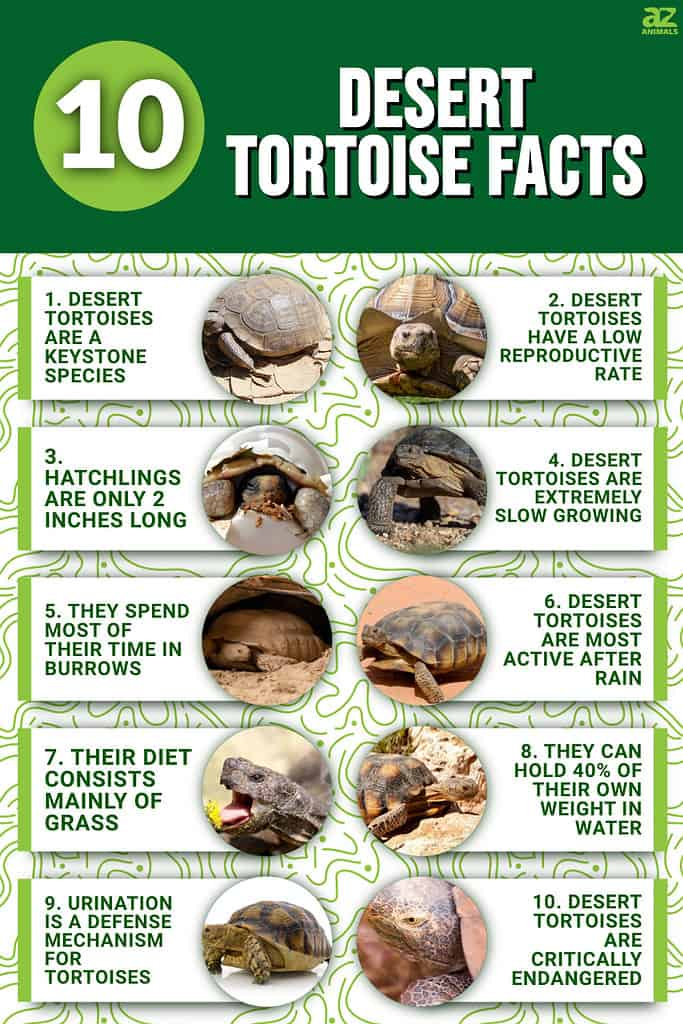
1. Desert Tortoises Are a Keystone Species

Desert tortoises create many burrows in harsh desert conditions which are then used by vast numbers of other animals.
©Tigerhawkvok / Creative Commons – License
A keystone species is an animal that benefits the entire ecosystem. They are incredibly important and without them, the ecosystem would be completely different. In fact, certain aspects of it might even not exist at all! Although other animals can still do their parts, keystone species influence and benefit the environment more than other species do. Desert tortoises are a keystone species and many other animals would cease to exist without the help that they provide.
Desert tortoises create many burrows in harsh desert conditions which are then used by vast numbers of other animals. A wide range of animals from birds, mammals, insects, and reptiles all rely on the burrows for shelter and for their nests. Desert tortoises also benefit the ecosystem by spreading seeds from the food they eat when they poop which helps grass and plants to spread and grow.
2. Desert Tortoises Have a Low Reproductive Rate

Desert tortoises take around 13 years to reach sexual maturity, which is when they are about 7 inches long.
©iStock.com/GoDogPhoto
Although they live for a very long time, up to 80 years in some cases, they actually have a really low reproductive rate. This comes down to a few reasons. The first is that desert tortoises are slow growing animals that take a really long time to mature. In fact, they don’t even reach sexual maturity until they are at least 7 inches long. Incredibly, this doesn’t usually happen until they are at least 13 years old.
Once they do reach sexual maturity, small clutch sizes are the other main factor that affects their reproductive rate. Although desert tortoises can lay up to three clutches of eggs per year, the clutch size can often consist of as little as 3 eggs. Even then, there is no guarantee that every hatchling with survive.
3. Hatchlings Are Only 2 Inches Long
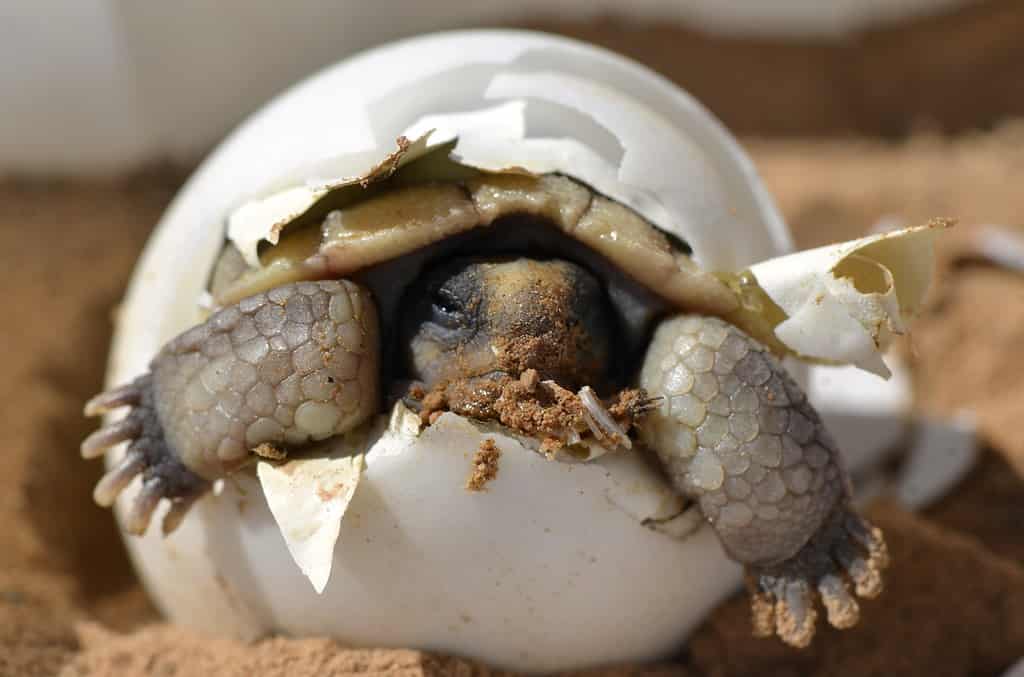
Desert tortoise hatchlings are only 2 inches long when they are born.
©U.S. Geological Survey from Reston, VA, USA, CC0, via Wikimedia Commons – License
Fully grown desert tortoises are around 14 inches long. However, when they are born they are only a fraction of that size. Desert tortoise hatchlings are only 2 inches long when they are born. Nests are usually dug either in or near the burrow and the female abandons the eggs after laying them. Therefore, when the tiny hatchlings are born they are left entirely alone to fend for themselves.
4. Desert Tortoises Are Extremely Slow Growing

Sonoran Desert Tortoise at Catalina State Park in Arizona.
©Sean R. Stubben/Shutterstock.com
Although desert tortoises have an adult length of between 10 and 14 inches they actually take a really long time to get there. In some cases, it can take as long as 20 years to reach their full adult size. Growth rate depends on a few factors such as location, habitat, and the amount of rainfall and it typically slows down as they get older. Desert tortoises grow fastest between birth and 4 years old. Between the ages of 4 and 6, their growth rate is around 0.5 inches per year, after which it decreases again to around 0.25 inches until the age of 20.
5. They Spend Most of Their Time in Burrows

Desert Tortoises spend most of their time in burrows.
©SLSK Photography/Shutterstock.com
As we mentioned earlier, desert tortoises are extremely important because they create a lot of burrows. However, they actually spend the majority of their time in them. They do this so that they can escape the heat and regulate their body temperature. The burrows also provide protection against the cold during the winter and it’s where they live while in a state of brumation. Burrows are typically dug in the banks of dry wash and can be between 8 and 30 feet long. Sometimes shelters are between rocks and boulders rather than dug into the ground. Desert tortoises typically come out at dawn and dusk to eat.
6. Desert Tortoises Are Most Active After Rain
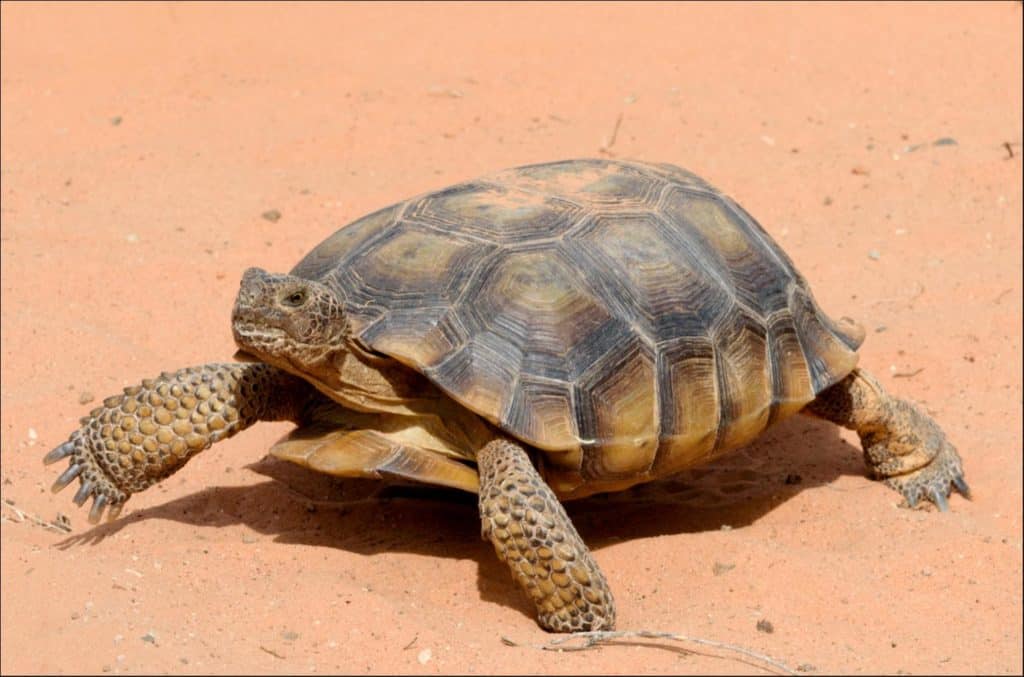
They spend the colder months between October and March in brumation and are then active in the early spring and early summer.
©John Andrus/Shutterstock.com
Although desert tortoises spend the majority of their time in their burrows, there are certain times of the year when they are more active. In fact, rainfall and temperature are the two primary factors that influence when they are most active. As a result, desert tortoises are most active after the seasonal rains. They spend the colder months between October and March in brumation and are then active in the early spring and early summer. They are typically inactive again during the height of the summer before becoming more active again in the fall.
7. Their Diet Consists Mainly of Grass
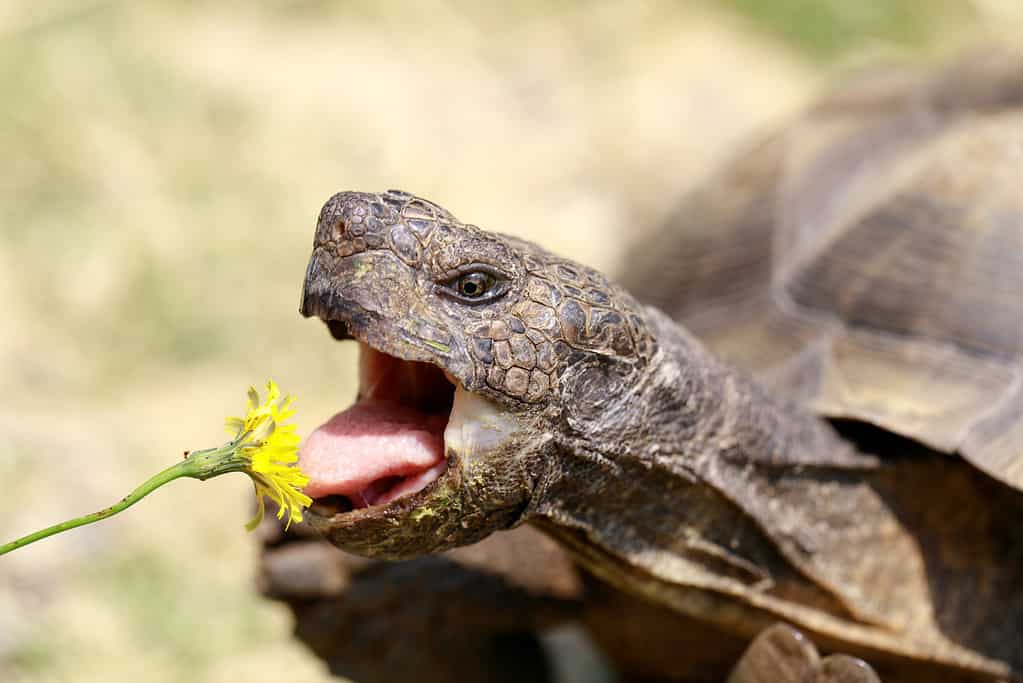
As well as eating grass they also eat a wide range of leafy greens – this includes weeds, wildflowers, herbs, and cacti.
©yhelfman/ via Getty Images
Desert tortoises are herbivores and the bulk of their diet is made up of grass – around 80% in fact! As well as eating grass they also eat a wide range of leafy greens – this includes weeds, wildflowers, herbs, and cacti. Although much of their food is dry and tough, desert tortoises don’t actually have teeth. Instead, they grind their food down using their beak. Also, as they often live in extremely dry environments where there are little to no bodies of water, desert tortoises actually get the bulk of their water intake from the food that they eat.
8. They Can Hold 40% of Their Own Weight in Water
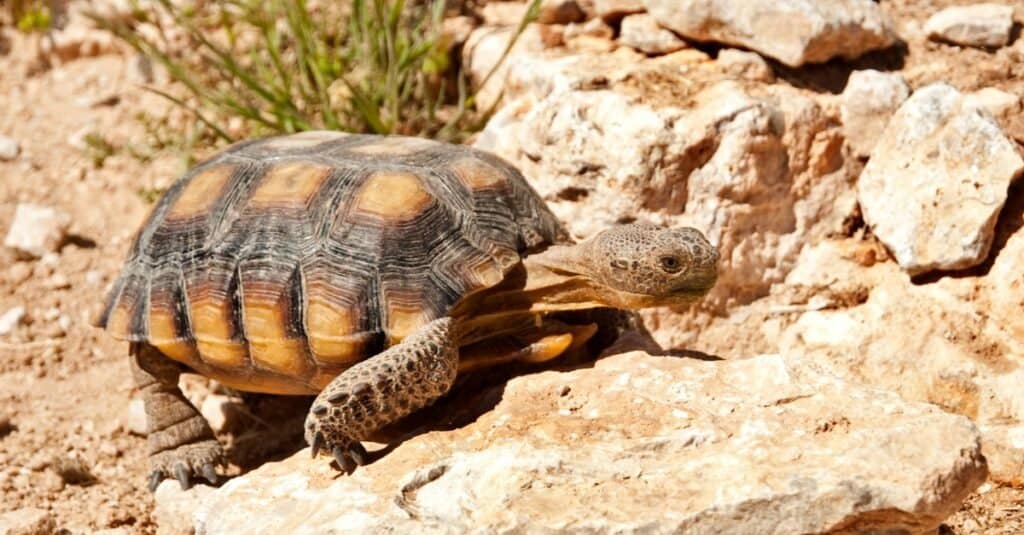
Desert Tortoises can actually hold 40% of their own body weight in water and manage up to one year without drinking.
©Darren J. Bradley/Shutterstock.com
Although it might seem surprising, given that we’ve just said where desert tortoises get a lot of their water from, they can actually hold up to 40% of their own body weight in water. They are able to do this because they have an extremely large bladder. They supplement the water that they get from their diet by drinking large amounts of water after heavy rainfall. Due to their ability to store water in their body, desert tortoises are able to go up to a year without drinking more water.
9. Urination is a Defense Mechanism for Tortoises
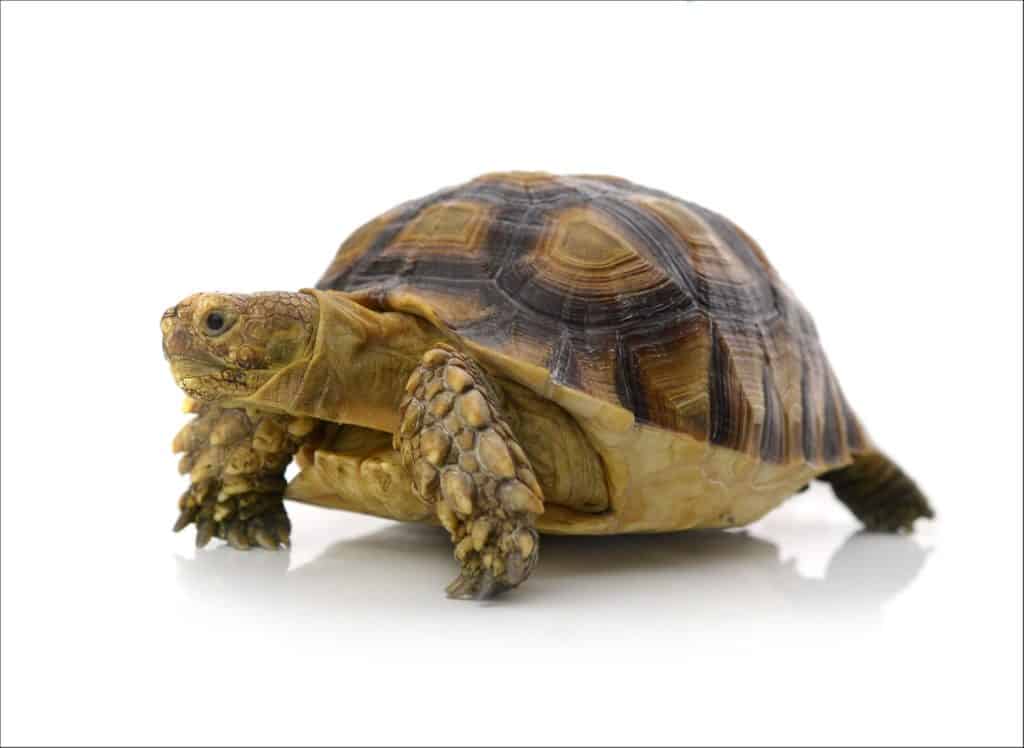
Desert tortoises hold
a lotof water in their bodies, but the downside of this is that expelling all of that in one go can actually leave them
morevulnerable.
©Mr. SUTTIPON YAKHAM/Shutterstock.com
Although urinating at predators doesn’t seem like it’s much of a defense mechanism, that really is what desert tortoises do when they are threatened or startled. Not a lot is known about quite how they figure that it will be of much help to them, but the best guess that scientists can come up with is that the sheer volume and the speed that it comes out can possibly deter predators. As we’ve just mentioned above, desert tortoises hold a lot of water in their bodies, but the downside of this is that expelling all of that in one go can actually leave them more vulnerable – this time to dehydration. This is because if they are in a dry area then they likely have little to no access to water to replenish what they have just lost and it can quickly become fatal for them.
10. Desert Tortoises are Critically Endangered

In most areas, it is against the law to touch, harm, or harass a desert tortoise.
©Utahcamera / Public Domain – License
Unfortunately, desert tortoises are in serious decline and are officially considered a critically endangered species. There are several factors that affect their population size. These include low reproduction rates, high juvenile mortality, habitat destruction (particularly due to urbanization), predators, and the illegal collection of both eggs and adults for the pet trade. In most areas, it is against the law to touch, harm, or harass a desert tortoise. This is an attempt to try and protect them and all of the other animals that benefit from them.
The photo featured at the top of this post is © John Andrus/Shutterstock.com
Thank you for reading! Have some feedback for us? Contact the AZ Animals editorial team.






